 |  | 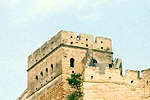 | 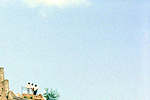 |
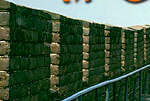 | 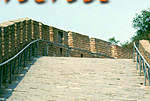 | 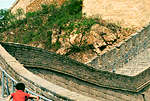 | 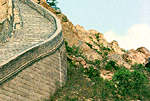 |
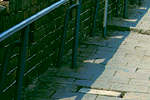 | 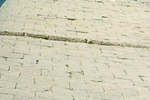 | 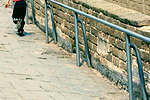 | 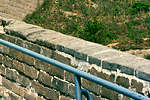 |
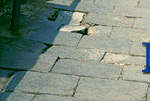 |  |  | 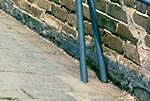 |
|
February 7, 2003 Villages in Transition |
|
It is hard for many people to imagine the size and scope of China, especially with the big seaboard cities taking up all the limelight and only the occasionaly Xinjiang flare-up, Three Gorges study or Yunnan pictorial bringing the rest of the country into the world’s focus. It is also difficult to imagine a country with 1.3 billion inhabitants. For Americans, think like this: Imagine America with 8x the people. There are thousands of villages sheltering millions of people all going through modernization in different ways with different results. This Spring Festival I took a small tour of a few Western Sichuan villages—just a few hours from the capital city and the difference was both unfathomably huge and curiously invisible. Sichuan Food Spring Festival is a time for eat and drink. And firecrackers. Sichuan is famous for its food, but never have I eaten such a wide range of ambrosia in my life: Red, sticky-sweet rice covered in melt-in-your-mouth smoked pork, bamboo shoots in a chicken broth with home-made horseradish and spinach, spicy mouth-numbing (ma la) fish, ma la chicken, ma la everything ... soft tofu of various varieties, spicy sausage and yams. We ate and ate and ate and the food never stopped. When we finally finished, cups of tea and biscuits followed until we snored at the table. These peasants once ate mud, rocks, worms and vegetables I didn’t know existed. These same peasants fought for one kilo of rice. These same peasants had meat, maybe, once a year. These same peasants revere Deng for giving them the chance to stuff a foreigner until he popped on the most important Chinese holiday. Lao Zhao runs the local We-Sell-It-All shop and the kids come running up with 5 cents to buy candy and firecrackers. Lao Zhao lives in Gao Miao (High Temple) Village. This village lies in the middle of the mountains and consists of two streets and a beautiful old town built around an ancient Taoist temple. (Atop one of the surrounding mountains perches the temple that gave the village its name). He can still sell the little ones pretty much anything they want while discussing the Columbia Tragedy and its (negligible, in his opinion) effects on the Chinese Space Program. He has a refrigerator and TV and everything is fine, just as the countless reports from the Chinese media assert. I sat with Old Zhao and his buddies, one of them the self-proclaimed "Party Secretary." As everyone laughed at this, The Secretary proceeded to inform us all that Gao Miao was naught but a collection of quaint wooden houses connected by bridge and surrounding a temple until Old Deng changed everything and brought in a coal factory across the river. After that, buses started arriving and "newcomers" opened up shops to support the workers, whose families rolled in and settled in along the road to "civilization"—which has since become a "highway." White-tiled cement blocks with garage door restaurants surrounded the town square and the old folks found themselves congregating by the bridge to the High Temple. Lao Zhao set up shop and it's been that way ever since. After he spoke about the wonderous healing properties of the local fish, I mentioned the landslides of refuse and plastic and fast-food noodle cartons pouring from every house into the river and asked if they contributed to the medicinal qualities of the fish. Everyone sat stunned. My friend glared at me and I must admit I turned red. The Secretary drew a deep breath and said: "This is the price of development." What the Missionaries Must Have Seen About two hours north of Gao Miao sits Hong Ya. Hong Ya was once three streets along a river and a bridge connecting them to the road north, to Meishan and eventually the capital. Along one of these streets sleep the dormitories of 18th century Catholic missionaries. Their Church, further up river, has been recently renovated. These stone buildings with square windows facing the streets, catwalks twelve feet up and oval doorways sit beside short, wooden thatched-roofed affairs with carved windows, sliding doors, bamboo stools, a central courtyard and flying-eaves painted red and chipped gold. They fit beautifully together. So beautiful, in fact, is the mixture of European and Chinese architecture that fat-cats from Chengdu are cruising the few hours southwest in their SUVs and buying up the buildings en masse. The old town, separated from Deng-initiated modern China by the bridge, is quiet and sunny during the day. Quiet and dim-lit by night. Lao Yu is a local who swears he can carry any load for forty miles after drinking 2 liters of Chinese moonshine (baijiu) and still be up for more. He is also the propieter of a nong jia le (villager ho-down spot) which his extended family took over for Spring Festival. We ate good and drank better with Lao Yu and his brothers, sisters, wife, sons, grandsons etc. while he waxed on with his moustache between two fingers. It seems Hong Ya is famous for a type of fern that the dinosaurs fed on, million of years ago, as well as for the best tofu in the land and some of the best tea money can’t buy. The river is clean (except for the signature garbage-landslides) and the people are the friendliest bunch of peasants a foreigner could ever hope to meet. But will it stay this way? "Phaw!" scoffs Yu. "The government doesn’t listen to the likes of us—soon they’ll see that tourism makes money here, and then the old town will be surrounded by new buildings." "We have no choice," his brother continues. "If we don’t comply and tear down the old huts, they’ll fine us." These statements always come with a "we love Deng and his Opening Up policy" qualification, as they should. Yu would have had no chance to operate his very own tofu-tea-baijiu-pork shack by the river under the old system. And his sons and younger brothers couldn’t have left Hong Ya to search for better jobs. Chinese peasants are still poor and isolated enough to disregard environment for the love of money, but more and more the debate concerning over-development and lack of control over what gets developed and how crops up in conversations from village tea houses to big city tea houses. Highways In a related side-note: The highways linking these villages to Chengdu and the rest of China carry with them a heavy price. According to Ivan Armstrong, Chief Engineering Advisor for Wilbur Smith Associates, the death toll on the highways is astronomical. Chinese haven’t had much experience with highways (roughly 20 years) and anyone who has driven in China knows chaos reigns supreme. In Sichuan, where the dogs bark at the sun (because the fog is so thick, the sun is a stranger to them), one wrong move means death on the highways. It became so bad that the Public Security Bureau assumed control of the statistics over the Dept. of Transportation. The bright spot is that litigation is helping build responsibility. In another related sidenote: The highway from Chengdu to Meishan is three feet thin on both sides. The concrete meant for the highway slipped into the pockets of the man in charge, and he has since been executed for his crimes. –Sascha Matuszak
Please Support Antiwar.comSend contributions to Antiwar.com or
Contribute Via our Secure Server Your contributions are now tax-deductible
|
Sascha Matuszak
is a teacher living and working in China. His articles have appeared
in the South China Morning Post, the Minnesota Daily,
and elsewhere. His exclusive Antiwar.com column (usually) appears
Fridays. Archived columns Smiles
and Nods and Handouts China:
Straddling the Fence Just Right Merry
Christmas from China Don't
Believe the Hype Jiang's
Theory Is a Smokescreen 'We
Make You Play Bad Card' The
Future of East-West Rapprochement Tiananmen's
Legacy: The Forgotten Rebellion Deciphering
the Chinese Smile Why
China Can Disregard US Anger Arming
the World: What the US Fears 1.3
Billion Problems For China China's
New Post-9/11 Status
Sweep 'Em Off the Streets
Chinese Embrace Progress China's
Afghan Agenda New
War May Reveal New Superpower, Part II New
War May Reveal New Superpower A
Chance for a New Friendship? Cheating
as a Way of Life China's
Internet Generation Free
Markets or Supermarkets Sailing
Towards World Significance China's
Youth Revolution |
